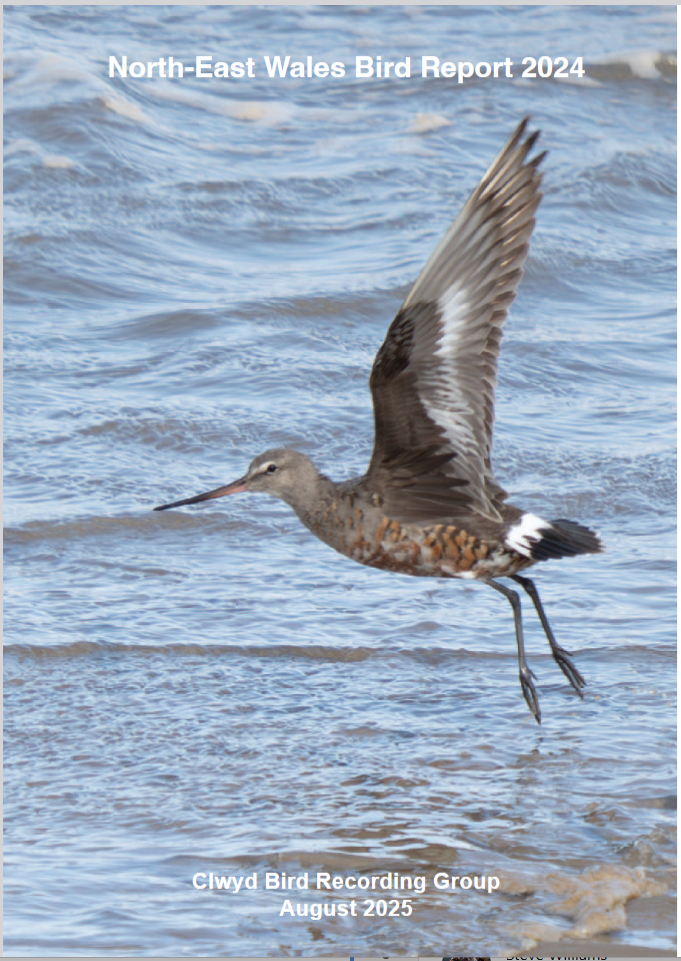Dee Estuary Birding
Monthly Newsletter...
November 2025
Newsletter
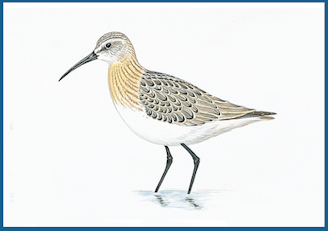
Curlew Sandpipers 2025

After their near absence last year, with just
four records locally, it was great to have lots of juvenile Curlew
Sandpipers coming through in September. Across the British Isles as a
whole BirdGuides (Ref 1) reported that several thousands were involved
and that it was the most significant influx for many years. Their
arrival showed an interesting pattern with unprecedented numbers in
early September in the Shetland and Orkney Islands, and, in particular,
the Outer Hebrides. There were more birds recorded in the latter
islands this September than in the previous 25 years put together! The
highest count being 93 at Ardivachar Point, South Uist, on the 10th.
There were also big numbers on the west coast of Ireland with at least
100 juveniles in County Clare on both the 12th and 13th September.
I'm told that Norway had the best Curlew Sandpiper passage for over 10 years (Pers. Comm. Jim Wilson, 21/10/25) and it seems likely that, as they flew down the Norwegian west coast, they were pushed out into the Atlantic by a fresh easterly wind and consequently ended up in the northern isles and extreme west coasts of Britain. Here, on the Dee Estuary, we have usually seen our first juveniles by the end of August but this year they were a bit late with the first one off Thurstaston on the 3rd, and the first multiple record not being seen until the 6th which ties in with the large arrival across the country over the weekend of the 6/7th.
We had some high counts with 22 at Hoylake
on 13th September the largest, other siginificant counts were 14 at
Meols and 16 at Heswall both on the 20th, and 14 off Flint Castle on
the late date of 7th October.
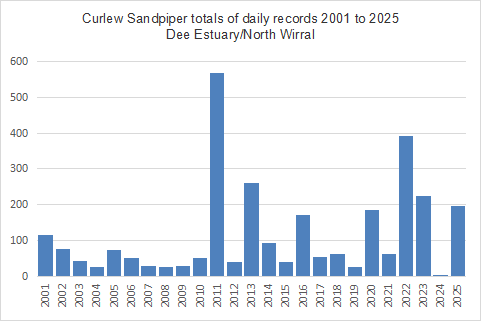
In terms of total records 2025 turned out to be the
fifth best year this century on the Dee/North Wirral as the above chart
demonstrates, and since 2011 we've had a whole series of good years. I
always find these large Curlew Sandpiper passages intriguing trying to
work out what route they may have taken to reach here, and their
movements after they have arrived. Some years, such as 2011, we had a
distinct double peak with one in the first week of September and the
second in the last week. I've speculated in the past that this could be
due to two waves of birds arriving - one wave coming down from the
north after flying down the west coast of Norway, and the other flying
in from the east after passing through the Baltic. It's also very
noticeable that during the first wave most birds are recorded along the
north wirral coast, whereas in the second wave most are seen at Burton
Mere Wetlands (BMW).
But 2025 was different with just one, albeit quite wide, peak in the middle of the month and only three records from BMW which is usually a prime site for them. See the two charts below:


The two charts above are comparing 2025 with the two
biggest passages over the past 15 years, 2011 and 2022. Not only were
there very few birds at BMW this year there were also none at all
reported from nearby Frodsham Marsh where there were flocks of over 40
in 2011
and 16 in 2022. It seems the juveniles coming down the west coast from
the north tend to stay on the coast, and, perhaps, we only get birds
visiting the more inland sites when they come across the country from
the east.
In my article in 2011 (Ref 2) I wrote "As a species
Curlew Sandpipers seem to
be doing well, with a good increase in the population over the past 30
years or so." Sadly, that no longer seems to be the case with some
severe declines reported in recent years, specially in the eastern half
of their range (Ref 3). But, at least they seem to have had a bumper
breeding season this year which is very good news.

References:
1. BirdGuides.com, The Curlew Sandpiper influx is biggest for years (news item), 20/09/25.
2. Richard Smith, The Curlew Sandpiper Influx,
November 2011 Newsletter (http://www.deeestuary.co.uk/news1111.htm).
3 Cornell Lab, 'All About Birds'. Curlew
Sandpiper Life History, 2024,
https://www.allaboutbirds.org/guide/Curlew_Sandpiper/lifehistory
As well as Ref 2 I have written several other
articles about Curlew Sandpipers including in 2011 and 2022, links to
them are here:
http://www.deeestuary.co.uk/past.htm
Data for this article have come from records published in this website (http://www.deeestuary.co.uk/), various Cheshire & Wirral Bird Reports and North East Wales Bird Reports and BirdGuides.com. Many thanks to everyone who has contributed.
Richard Smith
North-East Wales Bird Report 2024
Colour Ring Report
Black-tailed Godwits
Colour ringing of Black-tailed Godwits has been
taking place now for around 30 years, each one with a unique set of
rings/flags. As the years go by it becomes increasingly difficult to
find a unique combination of different colours to use so the ringers
have to come up with something a bit different and the four birds below
are good examples of the solutions they have come up with - in Iceland,
Ireland, France and North Wales.
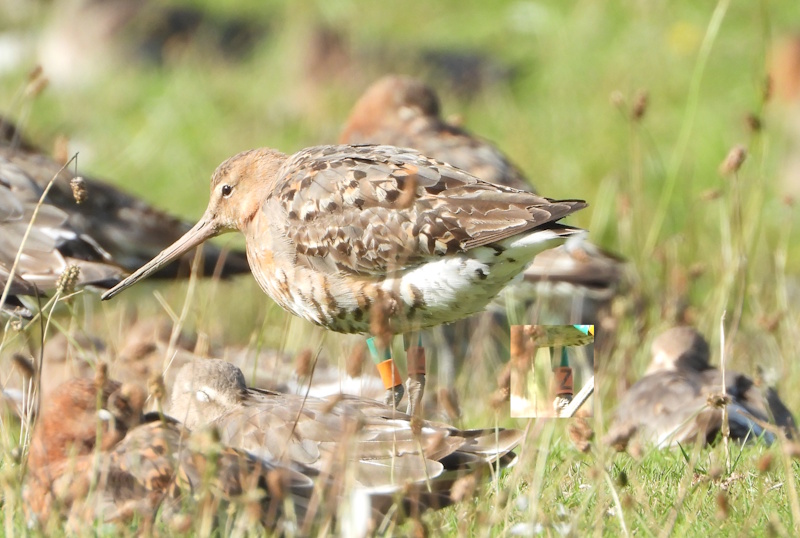
GO-GZ (Green
over Orange//Green over Orange enscribed with letter Z)
Ringed in southern Iceland in June 2023, as a breeding adult.
Recorded on the Tagus Estuary (Setubal), Portugal, in February 2025 and
at Caldy Wildfowl Collection on 31/07/2025.
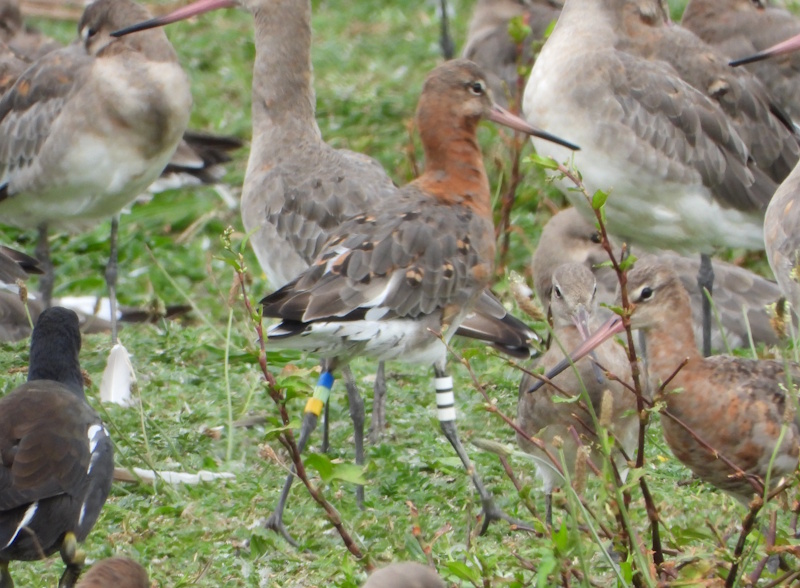
BLY-W= (blue over light green
over yellow//white with two black bands)
Ringed at Cork, southern Ireland, in January 2025.
Recorded in SW Iceland (near Selfoss) in April 2025, and at Caldy
Wildfowl Collection on three dates in August 2025.
It's always good to see birds which have been ringed
around the Cork harbour area where there is a keen ringing group, this
is the tenth Black-tailed Godwit we've recorded ringed by them.
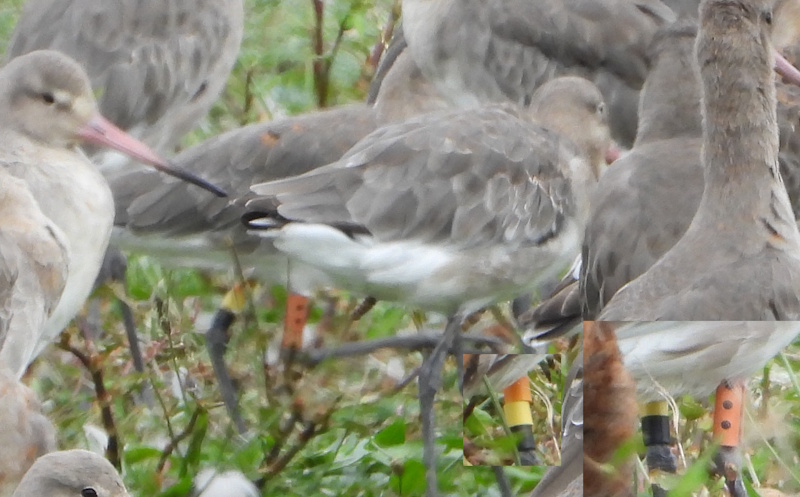
OYN-Odn (orange over yellow
over black//orange enscribed with three dots)
Ringed at Moeze (just south of La Rochelle, French Atlantic coast) in
September 2023.
Seen at L'Aiguillion-La-Presquile (north of La Rochelle) in August and
September 2024.
Recorded at Caldy Wildfowl Collection on 21/08/2025 and 27/09/2025.

Oflag(JN) (it
also has a green ring in the other leg)
Ringed at Bangor Harbour in January 2024.
This bird spends late autumn and winter along the North Wales coast, as
well as Bangor Harbour it's been recorded at Aber Ogwen, the Spinnies
at Ogwen and at Cors Ddyga on Anglesey. Late winter and spring sees it
either at Burton Mere Wetlands or Caldy Wildfowl
Collection/Thurstaston, and it's been recorded once in Iceland (June
2024). On return from breeding it is a regular at Caldy and, this year,
was ever present from late August to the end of September.
Knots
We await the main return of Knots in November but a
few started to turn up at the end of October, including these three
below.

Oflag (13C)
Ringed at Hoylake in November 2022.
This bird has been recorded regularly in the Liverpool Bay area, being
recorded at Thurstaston, Hoylake, Meols, Leasowe, Seaforth, Crosby,
Formby and Ainsdale. Since returning from breeding in 2025 it has been
recorded at Ainsdale on 19/08/2025 and 08/10/2025, and at Meols on
20/10/2025.
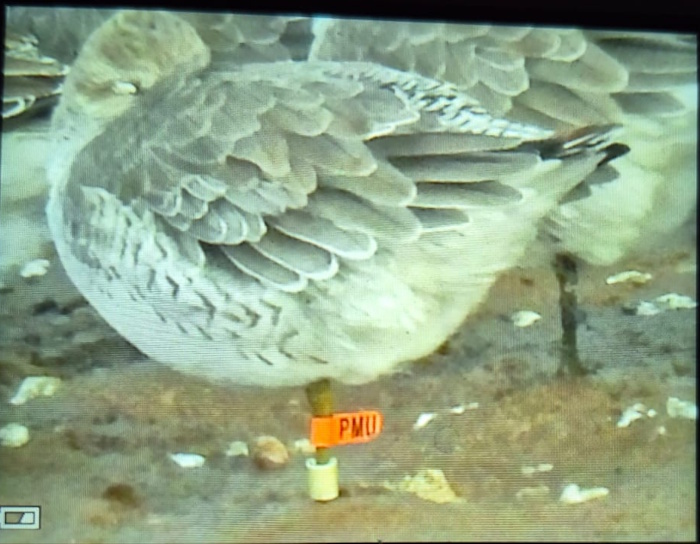
Oflag (PMU)
Ringed at Llanfairfechan in October 2023 as a juvenile.
In 2024 it over-summered being recorded several times at Seaforth and
Leasowe between June and early September. After visiting Thurstaston in
October 2024 there were several sightings from Bangor Harbour through
the winter before turning up at Meols in March 2025. It was recorded at
Meols again on 26/10/2025.

Oflag (90P)
Ringed at Ainsdale in May 2024.
It wasn't seen again until July 2025 when it was recorded at Seaforth,
and the following month at Ainsdale.
Recorded at Thurstaston on 20/10/2025 and Seaforth on 22/10/2025.
Shelduck
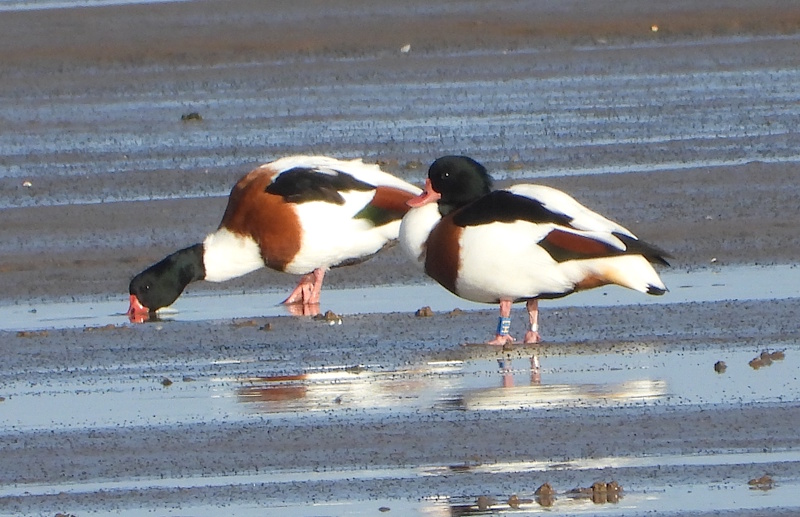
Blue (HJ)
Ringed at Withymoor Pool, Shropshire, on January 2022.
It was back at Withymoor Pool in February 2023 before being recorded at
Meols in November 2024 and 29/10/2025.
Withymoor Pool is a large pond in open farmland a few miles east of Whitchurch. It is obviously attractive to Shelducks as this is the fourth ringed one we've seen from there.
Colour Rings were recorded by Richard
Smith, Stephen
Hinde, Tony Ormond, Mike Pollard, Mike Barth and Richard Speechley.
Richard Smith
October Bird News


The month started with the Slavonian Grebe still showing well at West
Kirby Marine Lake but then Storm Amy struck on the 4th resulting in
some great sea-watching. It blew from the west that day but then went
to WNW overnight which meant loads of Leach's Petrels were seen on
Sunday 5th. I had six in just over 30 minutes at Meols that morning
but, as usual, it was Hilbre which had the highest count with a total
of 42 through the day. Other highlights were Storm Petrels at both
Hilbre and New Brighton, a couple of Sabine's Gulls, Great Skuas, Grey
Phalaropes and at least six Arctic Skuas including two which flew down
the beacj at Point of Ayr. One Great Skua hung around
the mouth of the estuary for the next couple of days causing havoc in
the wader and gull roosts!
There was an influx of Whooper Swans through the
month with 19 recorded on the 6th, including 13 which sat on the sea at
high tide off Heswall.
There were a couple of intriguing
'probable/possible' rarities with a juvenile Northern Harrier which
came
in off the sea on the 4th, four or five Bean Geese on the marsh just
north of Parkgate. A Goldcrest on Hilbre was caugh, ringed and released
in the Obs garden on the 17th.
Graham Jones (RSPB Burton Mere Wetlands/Dee Estuary Manager) released breeding totals for BMW for what seems to have been a very good breeding season for 2025:
"A few people having been
asking for breeding totals for BMW this year, so here’s summary -
Avocet 99prs, 84 fledged (+ 12prs, 11 fledged at Parkgate =
111prs total Dee)
Lapwing 85prs, 65 fledged
Redshank 49prs
LR Plover 1 pr
GW Egret 2 prs, 5 yng
Cattle Egret, 1pr, 2 yng
Spoonbill 1pr, 3 yng
Shoveler 39 prs (10 broods)
Gadwall 23prs (4 broods)
Marsh Harrier 1 pr, 3 yng BMW, 1pr, 3 yng Neston Reedbed
Med Gull 3prs, 1 fledged 3 yng
Cetti’s Warbler 34 territories Dee total (23 BMW)
27 Grey Heron & 75
Little Egret nests Marsh Covert heronry (plus 25 L Egret nests Point of
Ayr)."
Graham Jones
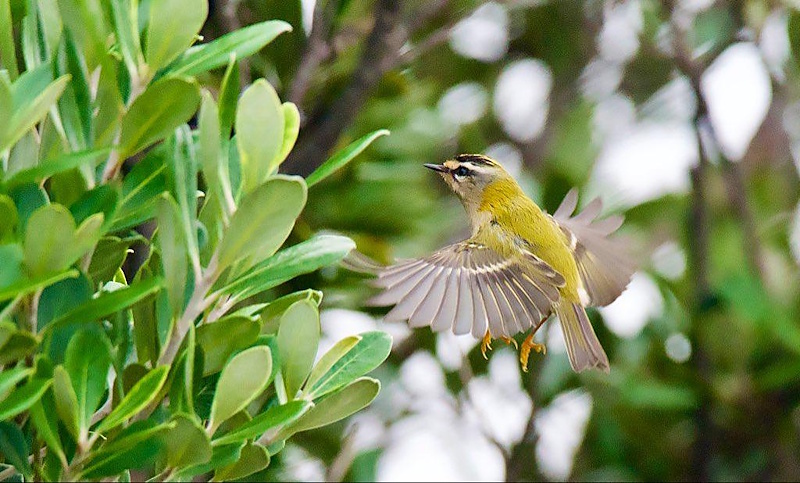
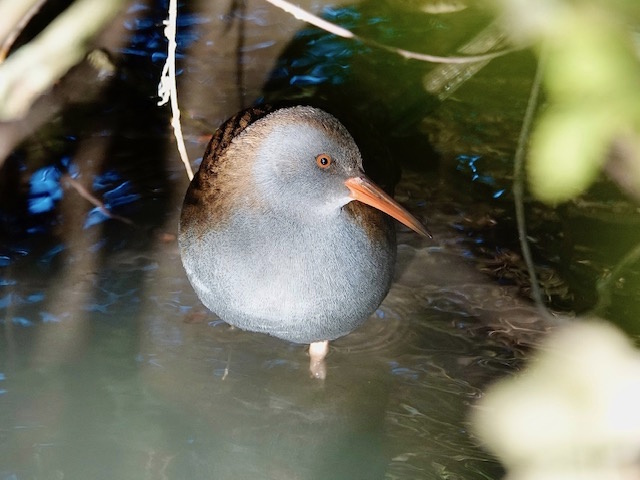
What to expect in November

I always look forward to November as it sees the return of thousands of
Knots to the estuary, putting on spectacular displays. I often walk to
the end of the causeway at low tide off Dee Sailing Club at Thurstaston
and I'm always astonished at the sheer numbers of birds, not just Knots
but also Redshank, Dunlin, Curlew, Grey Plover, Oystercatcher,
Pintail....... Meols is also a good spot to get close views of Knots
with hundreds either roosting or feeding close to the sea wall. The
high tides between the 5th and 8th should result in some good wader
roosts at Hoylake, West Kirby and Point of Ayr.
On the marshes we should see at least two or three Hen Harriers and Short-eared Owls, and one or two Bitterns and several Marsh Harriers will be flying into the roost at Neston Reedbed.
On a calm day look out to sea off North Wirral, you
will need a telecope as the birds will be distant but espect to see
several thousand Common Scoters and several hundred Great Crested
Grebes, with always the possibilty of one or two rarer scoters, and
perhaps Long-tailed Ducks, Scaup and Eiders.
November Highest
Tides:
5th 10.22hrs (GMT) 9.6m
6th 11.05hrs (GMT) 9.8m
7th 11.48hrs (GMT) 9.8m
8th 12.33hrs (GMT) 9.6m
